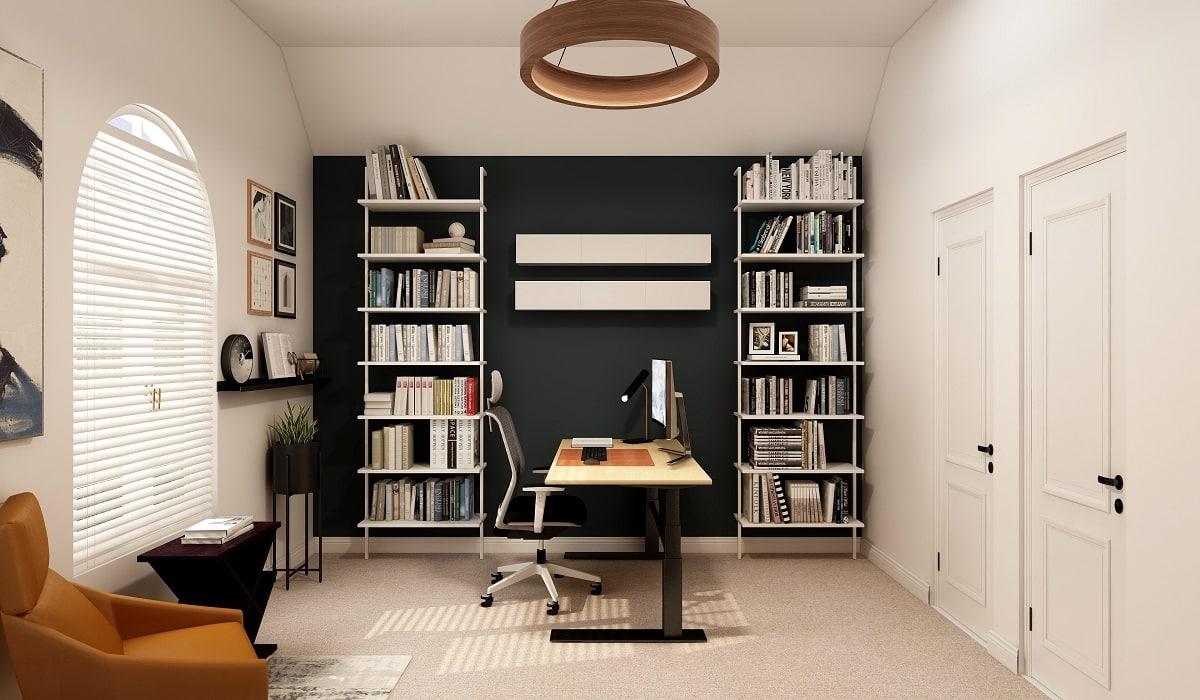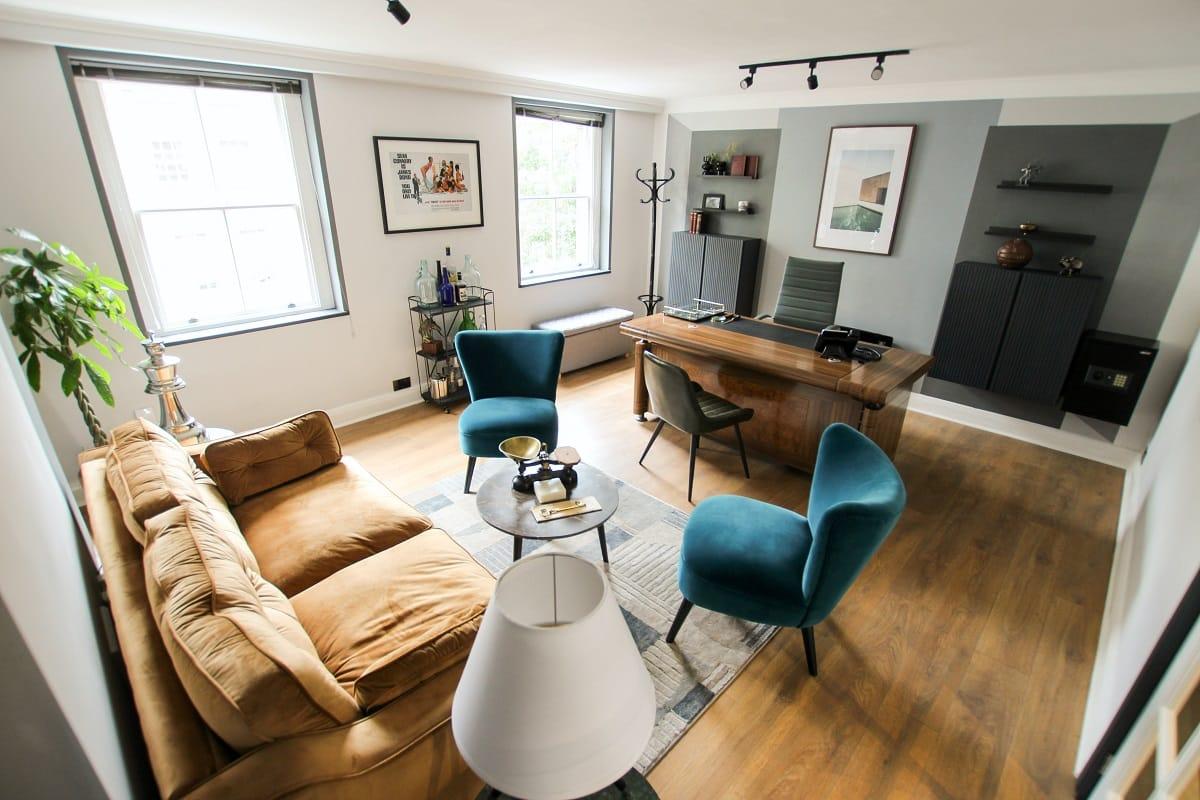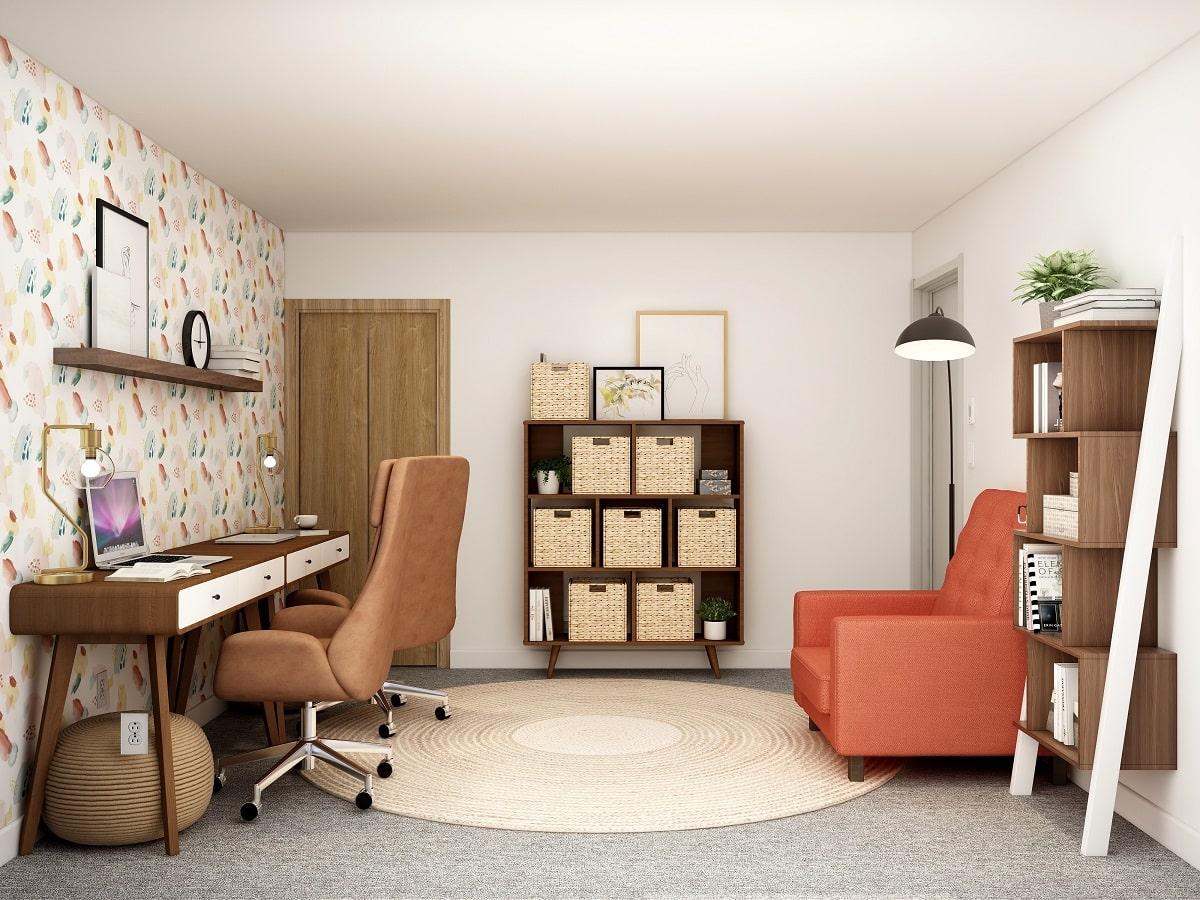The recent times have seen an exponential rise in the number of employees that have begun to work from home. Nowadays, people can easily acquire a quality home office desk and ergonomic chair to set up a comfortable home workspace.
However, as a general rule, job-related expenses can be taken into account while calculating tax liability only for the period prior to 2018. For 2018 and subsequent years, tax deductions for home offices and any employee expenses that haven’t been reimbursed aren’t available to employees.
But this isn’t the whole picture. To give you a better idea of what the law is with respect to home office tax deduction, we’ve compiled this short piece. To find out more on tax related home office issues and whether it is worth claiming home office on taxes please ponder on our previous articles.
If you’re an artist or an architect, you are bound to have work space at home. In your home office, wherever it is, however it looks, few things stay the same: you, your paper and pencil, maybe you are blending colorful pencils on your favorite chair. As a result, the work you do at home may help you claim home office deduction without any problem.
So, without further ado, let’s look into our topic, can you claim home office if you work from home?
Can You Claim Home Office If You Work From Home?

There are some situations in which a home office may be deductible. People who are self-employed can generally claim tax cuts easily. But people who are using it in the capacity of an employee of another person are disqualified.
The Home Office Must Be Used Exclusively For Business
It’s not sufficient to just work from home if you wish to qualify for a tax deduction. Some part of your house must mandatorily be used as a home office for you to qualify. In addition to that, the amount of deduction depends on the space earmarked as an office.
So, why is it important to have a dedicated work space? We have to keep in mind that only an exclusive space for an office will be tax deductible, and not the house as a whole. If you use any part of that space for personal reasons, such as to sleep or invite people over, then you won’t qualify for the deduction.
However, there are some further conditions for a home to qualify as a home office. Even if any one of these conditions is met, you will be eligible for a tax deduction.
1. Home Should Be The Principal Place Of Business
The best way to ensure that your home office qualifies for home tax deductions is to ensure that you use the home as a principal place of business. How you manage to depict this depends entirely on the nature of the work you do and where the work is done.
If you’re accomplishing most of your work at home, then the home will surely be designated as the principal place of business and will be thus eligible for a tax deduction. Along with this factor, the nature of your work also influences whether the home is a home office or not. If you’re performing essential business activities at home (those which generate revenue), then your home is a home office.
However, if you’re undertaking equally important business activities in more than one place, then the principal place of business will be where you spend more than half the time. This means that if you’re spending more than half the work time at some other location, then your home won’t qualify.
2. You’re Performing Administrative Actions At Home
You may also qualify for a home office deduction if you use the office for the fulfillment of managerial or administrative duties. Additionally, there should be no other location where managerial and administrative decisions are made.
Some examples of administrative actions are
-
- Keeping records and books
- Billing patients and clients
- Maintaining inventory
- Making appointments
- Drawing up reports
- Stocking supplies
However, if these actions are performed by you at any other location, then you won’t come under the purview of a home office.
3. Designation Of A Separate Structure As An Office
If you use a barn, studio, or garage as an office, then you could qualify for a home office tax deduction. It’s not necessary that the structure should masquerade as your principal place of business; however, it should be a separate structure.
But you mustn’t use the structure for any other purpose, such as storing tools or conducting parties. There’s also no specific definition of regular use; anything around 10-15 hours a week is enough.
In case you work in dual capacities, i.e. as a self-employed person and an employee, then you can only claim deductions for self-employment. For instance, you’ll have to split phone and electricity bills based on what line of your employment they were used for.
Convenience Of Employer Test
Employees are eligible for deductions on home offices if they additionally maintain the office for the sake of the employer. Here are the conditions that should be met for the same:
-
- There should be a condition of employment
- It is imperative that the business of the employer must function properly
- The employer should allow the employee to discharge their duties
So, if you’re using your office because it’s more convenient, then these criteria will not be met. The same is the case if you’re doing this because you’re more productive at home. However, if your employer hasn’t designated any specific office space for you, then the criteria are met.
Similarly, if due to some exigency, your office isn’t functional at the moment and you’re working from home to offset that, the requirement will be fulfilled. Another probable cause could be that the employer has ordered some work to be done after regular office hours, and the office space isn’t available during that time.
Now, in case you’ve not met this requirement but still regularly use your home as an office, then the employer might offer reimbursement for home office expenses. This payment won’t be taxable as long as all eligible expenses are properly accounted for.

Calculation Of Home Office Deductions
There are two ways of getting a home office tax deduction – the first method is that of simplified deduction. It is the easier of the two ways but leads to lesser tax savings. The second method of tabulation is the standard one, which requires significantly more complicated computations and meticulous record-keeping but provides larger deductions.
To maximize your overall deductions, we recommend using both methods for calculation and then going with the one that yields the most savings. However, there is no need to stick to one particular method forever. The manner of tabulation may vary from year to year.
1. Standard Calculation
Using this method, you can deduct the actual expenses incurred by you. Some of your office expenses, such as repairs and renovation or painting costs, will be covered 100%. Apart from this, you can deduct home office expenses incurred by you, but just a part of the total cost.
For instance, if your home office is one-fifth of the square footage of the home, you may be able to deduct a corresponding 5% of the rent, mortgage, or utilities. In addition to these, you can take the 5% away from expenses, such as insurance, pest control, mold removal, etc.
You can also deduct a part of your property taxes on the home. To apply for deductions under these heads, refer to the instructions given in IRS Form 8829. And to look at the eligible expenses, refer to IRS Publication 587.
2. Simplified Calculation
This method of tabulation came about in 2013, and since its advent, it has simplified tax calculations for scores of people. Here, instead of recording all your expenses, you can deduct $5 per square foot of your home office, up to 300 square feet, for a maximum deduction of $1,500.
The only requirement to calculate this way is that the office at home should qualify as a home office. One of the best things about this method is that there is no need to keep detailed records of expenses. Plus, there’s no need to fret about depreciation recapture when the house is sold.
Demarcating Expenses For Self-Employment
During the tax year, if you’ve worked for yourself, then you can claim tax deductions for self-employed expenses. If you’ve designated a separate area of your home as a home office, then keep all documents, such as mortgage papers, property tax filings, insurance documents, and utility bills handy.
This helps prove to the IRS that you were, indeed, self-employed. In fact, the IRS strongly suggests having a logbook or something similar. This especially comes in handy in case of any accusations of non-payment of taxes.
It’s also advisable to save proof of any tax-related expenditures. This could be in the form of a canceled check, itemized script, or a bank statement/credit card bill. We recommend holding on to these documents for at least three years.
Additionally, ensure that the receipts for any payments made in cash contain the date of payment, amount, and the name of the payee. Even digital records for the same will do; however, they should be inaccessible and untampered.

Can You Claim Home Office If You Work From Home Frequently Asked Questions ?
How is the deduction taken?
Using the simplified method, you can directly get the deduction on Schedule C upon reporting your business income and expenses. However, if you pick the standard method, then you must submit Form 8829 along with income tax returns. After doing so, report the total deduction from your business income on Schedule C.
Keep in mind that if the expenses for your home office exceed your business income, then the deduction may be limited.
What if your self-employment only lasted a few months?
Self-employment doesn’t necessarily have to be long-term in order for it to count. So, if you were fleetingly self-employed, for instance, maybe for a few months, you could still be eligible for a partial home office tax deduction.
Though the calculation of something like this becomes a tad more complicated, it is not impossible. For this, you need to account for the expenses incurred only for the months that you were self-employed. Say, for instance, you briefly worked as a freelance writer from June to December. In such a case, home office expenses will be taken into account for a period of 6 months.
Let’s take a numerical example for the same. If you decide to employ the simplified deduction method and deduct $5 for every square foot up to 300 feet, then you’ll be able to get a $625 tax deduction. In case your home office is larger than 300 sq. feet, you can take the deduction value as $125 instead.
You can also deduct a portion of the actual expenses incurred for the period that you worked in the home office. These expenses will include the mortgage interest for the month, electricity bills for that month, insurance premium paid in that period, etc.
But, again, like earlier stated, the office must be regularly used for business throughout the months that you’ve been working from home. Even if the home office space is just temporary, use it like it is a real office, since only then will you be eligible for a tax deduction.
Can both direct and indirect expenses be deducted?
Expenses that can be traced directly back to the self-employed home office work area are fully deductible, such as maintenance and repair costs. Indirect home expenses, such as utilities, homeowner association fees, and rent are also deductible. However, all of these expenses are subject to business income limitations.
Plus, a certain percent of these expenses may be allocated to the home office area based on the number of rooms or the square footage of a room in case the rooms are of similar sizes.
Now, business income limitation essentially means that one’s home office expenses are limited to the gross income procured from business activity, which is reduced by two factors. The first factor is other expenses for which deductions are allowed in the absence of business use (such as taxes on real estate and any mortgage interest).
The second factor is business deductions that cannot be allocated to home use, such as supplies and advertising. If you get some deductions under this provision, then the amount that has been disallowed gets carried forward to the coming tax year. This, however, is subject to the same limitation in that year.
Also, keep in mind that it isn’t necessary to own the home in order to claim a home office tax deduction. You can be eligible for these deductions even if you’ve rented the property.
What is the rule for Inventory Storage Space?
If there is some space in your home that you regularly use for the storage of product samples or inventory, then expenses for the same may be deductible. This, however, is subject to the fact that the space must be a fixed spot for the business.
Keep in mind, though, that regular use even if not exclusive is a must. For instance, it’s okay if you’re using part of the basement as a supply closet.
What is the rule for Daycare Businesses?
You may be able to claim home office deductions for any expenses incurred during self-employment if your home office is used for providing daycare facility. Keep in mind that daycare includes people who are older than 65 and people with mental or physical disabilities in addition to children.
Again, exclusive use of the space isn’t necessary, but regular use is.

Can You Claim Home Office If You Work From Home Final Thoughts
If you’re a self-employed individual, then home office tax deductions can potentially add thousands of dollars to your income. Since the rules post-2018 have become really stringent, it is important to ensure that one is covered under the ambit of home office tax deduction.
In our experience, the biggest hurdle usually has to do with being able to prove that the office has been consistently used for business. Records and documents can help with convincing the IRS of the same, so ensure that you keep all receipts.
Above everything, try to designate a specific area for use as a home office and take pictures of it. Store the pictures along with your tax records as proof, and whip them out if required!
With this, we’ve reached the end of this piece. Happy tax-saving!


